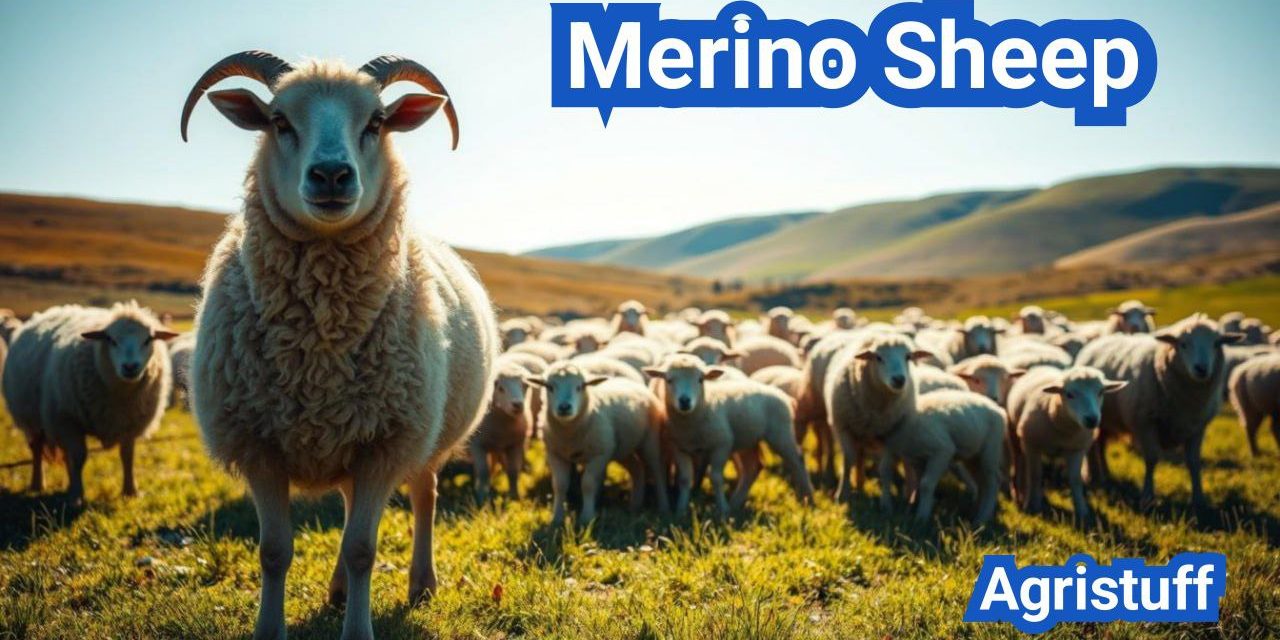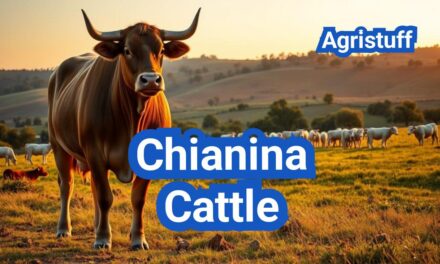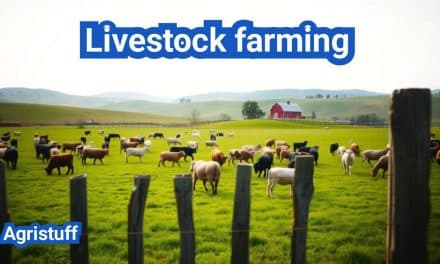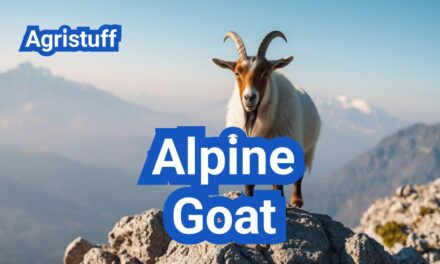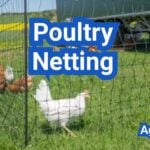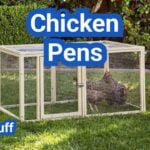The Merino Sheep breed is renowned for producing the finest quality wool, making it the gold standard in the textile industry.
Originating from Spain, Merino Sheep have been bred for centuries for their exceptional wool production. Today, they are primarily found in Australia and New Zealand, where the climate and grazing conditions are ideal for their growth.
Their fine and soft wool is highly prized for its warmth, breathability, and moisture-wicking properties, making it a favorite among outdoor enthusiasts and fashion connoisseurs alike.
Key Takeaways
- The Merino Sheep breed is known for its fine and soft wool.
- Merino Sheep are primarily found in Australia and New Zealand.
- Merino wool is highly valued for its warmth and breathability.
- The breed has been cultivated for centuries for its exceptional wool production.
- Merino wool is a popular choice among outdoor enthusiasts and fashion enthusiasts.
The Rich History and Origin of Merino Sheep
With roots tracing back to the 12th century, Merino sheep have become synonymous with fine wool. The breed’s history is a testament to their adaptability and the high quality of their wool.
Spanish Beginnings: The Birthplace of Merino
The story of Merino sheep begins in Spain, where they were first bred. The Spanish Merino was highly valued for its wool, which was used to create some of the finest textiles in Europe.
The breed’s early development in Spain was influenced by the country’s Moorish heritage and the need for high-quality wool. This historical context laid the foundation for the breed’s future success.
Global Expansion and Development
As European exploration and colonization expanded, Merino sheep were introduced to new regions. Their ability to adapt to different climates and conditions made them an ideal breed for many countries.
The global expansion of Merino sheep was driven by the demand for their fine wool. Countries like Australia and South Africa became significant producers, leveraging the breed’s adaptability and wool quality.
The Australian Merino Revolution
Australia played a pivotal role in the development of the Merino breed. The country’s climate and vast grazing lands made it an ideal location for large-scale Merino sheep farming.
The Australian Merino became renowned for its superfine wool, contributing significantly to the country’s economy and establishing Australia as a leader in Merino wool production.
Understanding Merino Sheep Characteristics

Merino sheep are renowned for their exceptional wool and distinct physical characteristics. These traits not only make them valuable for wool production but also contribute to their adaptability and hardiness.
Physical Attributes and Appearance
Merino sheep are known for their fine-boned structure and agile physique. They typically have a compact body with a deep chest and well-sprung ribs, contributing to their overall health and wool production capabilities. Their faces are usually free of wool, which helps them withstand various climatic conditions.
Merino Sheep Weight and Size Variations
The weight of Merino sheep can vary significantly based on factors such as age, sex, and breeding. Generally, mature Merino rams can weigh between 70 to 100 kg (154 to 220 lbs), while ewes typically range from 40 to 70 kg (88 to 154 lbs). Their size and weight are crucial factors in determining their wool production and overall health.
Color Varieties: From White to Black and Brown Merino
While the most common color associated with Merino sheep is white, they can also be found in other colors such as black and brown. These color variations are a result of selective breeding and genetic diversity within the breed. The different colors can affect the sheep’s appearance but not necessarily their wool quality or production.
Distinctive Merino Horns and Features
One of the notable physical characteristics of Merino sheep is the presence of horns in some individuals, particularly rams. The merino horn is a distinguishing feature that can vary in size and shape. Horns are generally seen in rams, while ewes are often polled (without horns) or have smaller horns. The presence and size of horns can be an indicator of the sheep’s sex, age, and genetic makeup.
Major Merino Sheep Breeds and Varieties
The Merino sheep breed has evolved into numerous varieties, each with distinct characteristics that cater to different wool production needs and agricultural environments. This diversity has enabled Merino sheep farmers worldwide to select breeds that best suit their specific conditions and requirements.
Australian Merino: The Global Standard
The Australian Merino is renowned for its high-quality wool and is considered a global standard in Merino sheep breeding. This breed has been developed over centuries, focusing on producing ultrafine wool with exceptional softness and warmth. Australian Merinos are highly adaptable and are found in various sheep farming regions around the world.
Key characteristics of Australian Merinos include:
- High-quality, ultrafine wool production
- Strong flocking instinct
- Hardiness and adaptability to various climates
American and Rambouillet Merino
The Rambouillet Merino, also known as the American Merino, is another significant breed within the Merino family. Originating in France and developed in the United States, this breed is prized for its fine wool and robust constitution. Rambouillet Merinos are known for their large size compared to other Merino breeds and their ability to thrive in different environments.
Notable features of Rambouillet Merinos:
- Large size and robust build
- Fine, high-quality wool
- Strong maternal instincts
European Varieties: German and Arles Merino
European Merino breeds, such as the German Merino and Arles Merino, have their own unique characteristics shaped by local breeding practices and environmental conditions. German Merinos are known for their high fertility and wool production, while Arles Merinos are recognized for their hardiness and fine wool.
Characteristics of European Merino breeds:
| Breed | Wool Quality | Fertility |
|---|---|---|
| German Merino | High | High |
| Arles Merino | Fine | Good |
Specialized Breeds: Dohne, Booroola, and South African Mutton Merino
Specialized Merino breeds like the Dohne, Booroola, and South African Mutton Merino have been developed for specific purposes, such as improved wool production or meat quality. These breeds offer farmers a range of options tailored to their production goals and environmental conditions.
Examples of specialized Merino breeds:
- Dohne Merino: Known for its high fertility and wool production
- Booroola Merino: Recognized for its prolificacy and genetic superiority
- South African Mutton Merino: Developed for both meat and wool production
The Exceptional Quality of Merino Wool

With its fine fibers and specific micron measurements, Merino wool stands out for its outstanding quality. Merino wool is highly regarded for its softness, warmth, and durability, making it a preferred choice for both clothing and textiles.
Understanding Wool Micron Measurements
The quality of Merino wool is often measured in microns, which refer to the diameter of the wool fibers. A lower micron count indicates finer wool, which is generally softer and more valuable. Merino wool typically ranges from 12 to 24 microns, with ultrafine Merino wool measuring below 18 microns.
Key benefits of lower micron wool include:
- Softness and comfort against the skin
- Improved temperature regulation
- Enhanced durability and resistance to wear
Ultrafine and Fine Wool Classifications
Merino wool is classified into different categories based on its micron count. Ultrafine Merino wool, with a micron count of less than 18, is particularly prized for its exceptional softness and fineness. Fine wool classifications, typically ranging from 18 to 20 microns, offer a balance between quality and affordability.
The classification of Merino wool into different micron categories helps producers and consumers alike in selecting the appropriate wool for their needs, whether it be for high-end clothing or durable textiles.
Plain-bodied Merino Advantages
Plain-bodied Merino sheep are known for their ability to produce high-quality wool without the influence of other breeds. This purity results in wool that is consistent in quality and characteristic of the Merino breed.
The advantages of plain-bodied Merino wool include:
- Consistency in fiber quality
- Enhanced softness and fineness
- Better performance in textile production
Comparing Merino to Other Wool Types
When compared to other types of wool, Merino wool stands out due to its fine fibers, temperature regulation properties, and softness. Unlike coarser wools, Merino wool is less itchy and more comfortable against the skin, making it ideal for next-to-skin wear.
| Wool Type | Micron Count | Softness Level |
|---|---|---|
| Merino Wool | 12-24 | High |
| Crossbred Wool | 24-30 | Medium |
| Coarse Wool | 30+ | Low |
How to Start a Merino Sheep Farm
Embarking on a Merino sheep farming venture requires meticulous planning and a thorough understanding of the land, climate, and necessary infrastructure. Starting a Merino sheep farm is a significant investment, both in terms of time and resources, but with the right approach, it can be a highly rewarding endeavor.
Assessing Land Requirements and Climate Suitability
The first step in establishing a Merino sheep farm is to assess the suitability of your land. Merino sheep are adaptable to various climates, but they thrive in areas with mild winters and cool summers. The land should have adequate grazing pasture and access to clean water.
- Evaluate the quality and quantity of pasture available for grazing.
- Consider the climate and its potential impact on sheep health.
- Ensure access to sufficient clean water for the flock.
Essential Infrastructure and Equipment
Once the land’s suitability is confirmed, the next step is to invest in the necessary infrastructure and equipment. This includes fencing to secure grazing areas, shelters for protection against extreme weather, and equipment for feeding and watering the sheep.
Key Infrastructure Investments:
- Fencing to delineate grazing areas and protect the flock.
- Shelters or barns for weather protection.
- Feeding and watering systems.
Initial Investment Planning
Starting a Merino sheep farm requires a significant initial investment. This includes the cost of purchasing the initial flock, infrastructure development, and equipment. A detailed financial plan is crucial to understand the costs involved and to ensure the sustainability of the farm.
Legal Considerations and Permits
Before commencing operations, it’s essential to comply with local regulations and obtain necessary permits. This may include zoning permits, environmental permits, and health department permits.
Consulting with local agricultural authorities and legal experts can provide valuable insights into the specific legal requirements for your area.
Selecting Quality Merino Sheep for Your Flock

When it comes to building a high-quality Merino sheep flock, selecting the right animals is crucial. The success of your breeding program depends on the genetics, health, and productivity of your Merino sheep.
Evaluating Merino Rams: Key Traits
Merino rams play a significant role in the genetic improvement of your flock. When evaluating Merino rams, look for key traits such as:
- Superior wool quality
- High fertility rates
- Strong muscling and growth rate
- Good temperament
Assessing these traits involves a thorough examination of the ram’s physical attributes, performance records, and genetic background.
Choosing Productive Merino Ewes
Merino ewes are the backbone of your flock, and their productivity directly impacts your farm’s profitability. When selecting Merino ewes, consider factors such as:
- Fertility and lambing ease
- Milk production and maternal ability
- Wool production and quality
- Longevity and durability
A well-chosen ewe will not only produce high-quality wool but also contribute to the overall health and resilience of your flock.
Assessing Wool Quality in Live Animals
Evaluating wool quality in live Merino sheep involves examining the fleece for characteristics such as:
| Wool Characteristic | Description | Importance |
|---|---|---|
| Fineness | Measured in microns, it indicates the wool’s softness | High |
| Staple Length | The length of the wool fibers | Medium to High |
| Crimp | The waviness of the wool fibers, affecting its elasticity and resilience | Medium |
| Color | The natural color of the wool, ranging from white to various shades of brown and black | Variable |
Assessing these characteristics helps in selecting animals that will produce high-quality wool.
Health Indicators and Genetic Considerations
The health and genetic integrity of your Merino sheep are paramount. Look for health indicators such as:
- Resistance to internal parasites
- Freedom from genetic disorders
- Overall condition and vitality
Genetic considerations should include diversity within your flock to ensure long-term sustainability and resilience.
By carefully evaluating these factors, you can build a robust and productive Merino sheep flock that will yield high-quality wool and contribute to the success of your farm.
Essential Care and Management of Merino Sheep

Caring for Merino sheep involves a comprehensive approach, including feeding, health checks, and breeding programs. Effective management is crucial for maintaining the health and productivity of the flock.
Daily Care Routines and Feeding Requirements
Merino sheep require a balanced diet that includes high-quality pasture, hay, and supplements as necessary. Daily care routines should include monitoring the flock’s nutritional intake and ensuring access to clean water.
Nutritional Needs of Merino sheep vary by age, size, and production stage. For instance, lactating ewes require more nutrients than dry ewes.
| Category | Nutritional Requirements | Feeding Recommendations |
|---|---|---|
| Lactating Ewes | High energy and protein | Supplement with grain and ensure access to high-quality pasture |
| Dry Ewes | Moderate energy and protein | Maintain on good pasture, supplement as necessary |
| Growing Lambs | High protein for growth | Provide creep feed with high protein content |
Seasonal Management Practices
Seasonal changes necessitate adjustments in management practices. For example, during hot summer months, providing shade and ensuring adequate water intake is crucial.
“Seasonal management is key to maintaining the health of Merino sheep. Adjusting practices according to the season can significantly impact the flock’s productivity and well-being.” – Expert in Merino Sheep Farming
Health Monitoring and Disease Prevention
Regular health monitoring is vital for early detection of diseases. Implementing a vaccination program and maintaining a clean environment are critical for disease prevention.
Breeding Programs and Lamb Care
Breeding programs should be designed to improve the genetic quality of the flock. Proper care of lambs, including timely vaccinations and adequate nutrition, is essential for their survival and growth.
Effective breeding programs involve selecting rams with desirable traits and monitoring the reproductive health of ewes.
Step-by-Step Guide to Merino Sheep Shearing

Shearing Merino sheep is a critical process that requires precision, patience, and the right techniques to ensure high-quality wool and maintain animal welfare. This guide will walk you through the essential steps and considerations for effective Merino sheep shearing.
Timing and Frequency Considerations
The timing of Merino sheep shearing is crucial and depends on several factors, including climate, geographical location, and the sheep’s condition. Generally, Merino sheep are sheared once or twice a year.
- Climate Considerations: In regions with extreme temperatures, shearing is often timed to avoid the hottest or coldest periods.
- Sheep Condition: The health and condition of the sheep can also dictate the best time for shearing.
Equipment Selection and Preparation
Having the right equipment is vital for efficient and safe shearing. This includes high-quality shears, combs, and cutters.
- Shear Selection: Choose shears that are appropriate for the size and type of your Merino sheep.
- Maintaining Equipment: Regular maintenance of shearing equipment is crucial to ensure it remains in good working condition.
The Shearing Process: Techniques and Best Practices
Effective shearing techniques are essential for maximizing wool quality and ensuring the sheep’s comfort and safety.
- Preparation: Before shearing, ensure the sheep are clean and dry.
- Shearing Technique: Use a systematic approach to shearing, starting from the belly and working your way around the sheep.
Post-Shearing Care and Management
After shearing, proper care is necessary to protect the sheep from the elements and promote healing of any minor cuts.
- Monitoring: Keep a close eye on the sheep for signs of stress or infection.
- Providing Shelter: Ensure the sheep have adequate shelter to protect them from extreme weather conditions.
By following these guidelines, Merino sheep farmers can ensure a successful shearing process that benefits both the sheep and the quality of the wool produced.
Processing and Grading Your Merino Wool Harvest

After successfully shearing your Merino sheep, the next crucial step involves processing and grading the wool to maximize its value. This stage is critical in determining the quality and price of your Merino wool.
Initial Wool Handling and Sorting Methods
The initial handling of Merino wool is crucial for maintaining its quality. Shearing produces a fleece that needs to be carefully managed to prevent damage. Sorting is typically done based on the wool’s quality, color, and length. This step is essential for ensuring that the wool is processed according to its characteristics.
Cleaning and Scouring Techniques
Cleaning and scouring are vital processes in Merino wool processing. Scouring involves washing the wool to remove grease, dirt, and other impurities. Various techniques can be employed, including traditional methods using hot water and detergent, or more modern, eco-friendly approaches. The goal is to clean the wool without damaging its fibers.
Understanding Grading Systems and Standards
Grading systems for Merino wool vary but generally involve assessing the wool’s micron count, length, strength, and color. Understanding these grading systems is crucial for producers to know how their wool will be categorized and priced. Different markets may have different standards, so it’s essential to be aware of the requirements for your target market.
Preparing Wool for Market or Processing
Once the wool is cleaned and graded, it needs to be prepared for sale or further processing. This may involve baling the wool or sending it to a mill for spinning into yarn. The preparation method depends on whether you’re selling raw wool or producing value-added products like yarn or fabric.
Effective Merino wool processing and grading require attention to detail and a thorough understanding of the processes involved. By following best practices, producers can ensure their wool meets the highest standards, commanding a better price in the market.
Implementing Sustainable and Regenerative Merino Wool Farming

The Merino wool industry is embracing sustainability through innovative farming techniques. As consumers become increasingly environmentally conscious, the demand for sustainably produced wool is on the rise. Merino sheep farming, with its potential for regenerative practices, is at the forefront of this movement.
Environmental Benefits of Proper Grazing Management
Proper grazing management is crucial for the environmental sustainability of Merino sheep farming. By implementing rotational grazing practices, farmers can enhance soil health, promote biodiversity, and improve water retention. This not only benefits the environment but also contributes to the overall health and productivity of the flock.
Key environmental benefits include:
- Soil regeneration through reduced erosion and increased organic matter
- Biodiversity conservation by maintaining diverse pasture species
- Improved water cycles and reduced runoff
Regenerative Farming Practices for Merino Flocks
Regenerative farming practices focus on regenerating the soil, improving biodiversity, and enhancing ecosystem services. For Merino sheep farming, this involves adopting practices such as:
- Holistic grazing management
- Minimal tillage or no-till farming
- Incorporating cover crops into rotations
These practices not only improve the sustainability of the farm but also contribute to carbon sequestration, making Merino wool production more climate-friendly.
Ethical Wool Production Standards
Ethical wool production standards are essential for ensuring the humane treatment of Merino sheep. This includes providing adequate living conditions, proper health care, and humane handling practices. Ethical standards also extend to the shearing process, ensuring that it is carried out in a manner that minimizes stress and discomfort for the animals.
Certification Programs and Consumer Trust
Certification programs play a vital role in promoting consumer trust in sustainable and regenerative Merino wool products. Programs such as the Responsible Wool Standard (RWS) and ZQ Merino certification ensure that wool is produced according to rigorous social and environmental standards. These certifications provide consumers with assurance that their purchases support ethical and sustainable farming practices.
By adopting sustainable and regenerative practices, Merino sheep farmers can not only improve the environmental sustainability of their operations but also enhance their marketability and appeal to eco-conscious consumers.
Marketing and Selling Your Merino Wool Products

Merino wool producers must navigate a complex landscape of marketing and sales to reach their target audience. Understanding the intricacies of the Merino wool market is crucial for developing effective sales strategies.
Understanding the Merino Wool Market and Pricing
The Merino wool market is influenced by various factors, including global demand, production costs, and competition. To price Merino wool products competitively, producers must stay informed about market trends.
| Market Factor | Influence on Pricing |
|---|---|
| Global Demand | Increased demand can drive up prices |
| Production Costs | Higher costs may lead to higher prices |
| Competition | Intense competition can lead to lower prices |
Direct-to-Consumer vs. Wholesale Strategies
Merino wool producers can choose between direct-to-consumer sales and wholesale strategies. Direct-to-consumer sales allow for higher profit margins, while wholesale strategies can provide a more stable revenue stream.
Direct-to-Consumer Advantages:
- Higher profit margins
- Greater control over branding
- Direct customer feedback
Wholesale Advantages:
- Stable revenue stream
- Less marketing effort required
- Broader market reach
Building a Brand Around Quality and Sustainability
Building a brand around the quality and sustainability of Merino wool products can differentiate producers in a competitive market. Highlighting the eco-friendly production processes and the superior quality of Merino wool can attract environmentally conscious consumers.
Online and Offline Sales Channels
Utilizing both online and offline sales channels can maximize the reach of Merino wool products. Online platforms offer global visibility, while offline channels, such as local markets and retail partnerships, provide direct customer interaction.
Online Sales Channels:
- E-commerce websites
- Social media platforms
- Online marketplaces
Offline Sales Channels:
- Local markets
- Retail partnerships
- Trade shows
Beyond Wool: Additional Benefits of Raising Merino Sheep

Beyond their prized wool, Merino sheep offer additional advantages that can enhance a farm’s profitability. The versatility of Merino sheep makes them an attractive choice for farmers looking to diversify their operations.
Merino Lamb and Mutton Production
Merino sheep are not only valued for their wool but also for their meat production. Merino lamb is considered a delicacy in many markets, commanding a premium price due to its tenderness and flavor. The production of Merino lamb and mutton provides farmers with an additional revenue stream, helping to offset the costs associated with maintaining their flock.
Merino lamb production involves breeding and raising lambs for meat, typically targeting specific market weights and ages. This requires careful management of the flock’s nutrition and health to ensure optimal growth rates.
| Product | Market Demand | Price Range |
|---|---|---|
| Merino Lamb | High | $5-$7 per pound |
| Merino Mutton | Moderate | $3-$5 per pound |
Breeding Stock as Revenue Stream
Merino sheep are highly regarded for their genetic quality, making them a sought-after choice for breeding programs. Selling breeding stock can be a lucrative business, as farmers are willing to pay a premium for high-quality Merino rams and ewes.
To capitalize on this opportunity, farmers must focus on maintaining the genetic integrity and superior characteristics of their Merino flock. This involves careful selection and breeding practices to ensure that their stock remains competitive in the market.
Agritourism and Educational Opportunities
Agritourism is an emerging trend that allows farmers to open their farms to visitors, providing educational experiences and generating additional income. Merino sheep farms can capitalize on this trend by offering tours, workshops, and hands-on experiences related to sheep husbandry and wool production.
This not only diversifies the farm’s revenue streams but also helps to educate the public about the importance of sheep farming and the value of sustainable agricultural practices.
Land Management and Ecological Services
Merino sheep can play a crucial role in land management through controlled grazing, which can help maintain or improve the ecological health of pastures. By managing grazing patterns, farmers can enhance biodiversity, reduce erosion, and promote the growth of desirable plant species.
This aspect of Merino sheep farming contributes to ecological services that benefit not only the farm but also the broader environment. Farmers can potentially receive payments or credits for these ecological services through various conservation programs.
The Future of Merino Sheep Farming
The future of Merino sheep farming is shaped by evolving industry trends, growing demand for sustainable products, and advancements in technology. As consumers increasingly prioritize eco-friendly and responsibly sourced materials, the Merino sheep industry is poised for growth.
Sustainability will play a crucial role in the future of Merino sheep farming. Regenerative farming practices, which prioritize soil health, biodiversity, and efficient water use, are becoming more prevalent. These methods not only enhance the environmental footprint of Merino sheep farming but also contribute to improved wool quality and increased farm resilience.
Technological innovations, such as precision agriculture and advanced breeding programs, are also set to transform the Merino sheep industry. These advancements will enable farmers to optimize flock management, improve productivity, and reduce environmental impacts.
As the global demand for high-quality, sustainable wool continues to rise, the Merino sheep industry is well-positioned for continued success. By embracing innovative practices and prioritizing sustainability, Merino sheep farmers can capitalize on emerging opportunities and drive the future of the industry.
FAQ
What is the origin of Merino Sheep?
Merino Sheep originated in Spain and were later developed in various countries, including Australia, which became a significant hub for Merino Sheep breeding.
What are the characteristics of Merino Sheep?
Merino Sheep are known for their fine wool, robust constitution, and adaptability to various climates. They come in different sizes, weights, and colors, including white, black, and brown.
What makes Merino wool superior to other types of wool?
Merino wool is considered superior due to its fine micron measurement, softness, breathability, and temperature regulation properties. It is also durable and resistant to wrinkles.
How do I start a Merino Sheep farm?
To start a Merino Sheep farm, you need to assess land requirements, climate suitability, and essential infrastructure. You should also plan your initial investment, consider legal requirements, and obtain necessary permits.
What are the key traits to evaluate when selecting Merino Rams?
When selecting Merino Rams, evaluate their genetic potential, fleece quality, and health indicators. Look for rams with a strong constitution, good fertility, and desirable wool characteristics.
How often should I shear my Merino Sheep?
The frequency of shearing depends on factors like climate, wool growth rate, and intended use of the wool. Typically, Merino Sheep are sheared once or twice a year.
What are the benefits of regenerative Merino wool farming?
Regenerative Merino wool farming promotes environmental benefits like improved soil health, biodiversity, and efficient water use. It also enhances the overall sustainability of the farm.
How can I market and sell my Merino wool products?
To market and sell Merino wool products, understand your target market, build a brand around quality and sustainability, and leverage online and offline sales channels.
What are the additional benefits of raising Merino Sheep beyond wool production?
Raising Merino Sheep can provide additional revenue streams through lamb and mutton production, breeding stock sales, agritourism, and ecological services like land management.
How do I ensure the health and well-being of my Merino Sheep?
Ensure the health and well-being of your Merino Sheep by providing proper nutrition, regular health monitoring, disease prevention measures, and suitable living conditions.
What is the future of Merino Sheep farming?
The future of Merino Sheep farming looks promising, driven by industry trends towards sustainability, regenerative practices, and growing demand for high-quality Merino wool.
Conclusion Of: Merino Sheep
Origins and Breed Excellence
Merino Sheep trace their roots back to the Iberian Peninsula in the Middle Ages, where they were developed as a prized Spanish export. Over centuries, these sheep were selectively bred, exported to nations like Australia, and further refined to produce exceptionally fine and soft wool. Today, Merino Sheep remain the gold standard for premium wool worldwide.
Learn more about Merino Sheep history from the Australian Wool Innovation.
Unmatched Wool Quality
Merino Sheep produce wool with a fiber diameter typically under 24 microns—often ranging from 11.5 µm (ultrafine) to around 23 µm—making it among the softest and most luxurious wools available. This fine wool is beloved in fashion and luxury textiles for its smooth feel and excellent crimp, with up to 100 crimps per inch.
Discover the science behind wool fiber quality from the USDA.
Annual Wool Yield and Staple Length
Every year, healthy Merino Sheep can yield between 3 and 18 kilograms of greasy wool, depending on strain and conditions. Staple length typically ranges from 2 to 5 inches, ideal for spinning and weaving high-quality yarns. This annual cycle ensures a renewable and reliable source of valuable fleece.
Explore wool production statistics from the Food and Agriculture Organization (FAO).
Sustainable and Natural Fiber
Merino Sheep produce a fiber made of keratin—a natural protein also found in human hair—and minor mineral content. They grow this fleece using nothing more than sunlight, grass, water, and air, making Merino wool a renewable, biodegradable, and eco‑friendly fiber. Its natural elasticity, resilience, moisture management, and insulating properties further enhance its appeal.
Read about sustainable wool farming from The Woolmark Company.
Processing From Fleece to Fabric
After shearing—often conducted annually or semi‑annually—Merino Sheep wool is cleaned, carded, graded, and spun into yarn. Its fine fiber and consistent staple quality reduce breakage and enhance the strength and uniformity of resulting yarns. This makes Merino Sheep wool perfect for applications like fine apparel, performance wear, and woven fabrics.
Learn about wool processing from the International Wool Textile Organization (IWTO).
Global Production and Regional Excellence
Though Merino Sheep originate from Spain, Australia now leads global production, supplying about 25% of the world’s wool. Australian Merino Sheep have been bred through initiatives like Peppin and Saxon bloodlines, as well as selective plain‑bodied strains to reduce problems like flystrike. Merino flocks also thrive in the USA and South Africa, each with regionally adapted strains under the broader Merino umbrella.
Explore Australia’s wool industry from Meat & Livestock Australia (MLA).
Animal Welfare and Industry Practices
Because Merino Sheep grow dense fleeces continuously, annual shearing is essential to prevent heat stress, impaired vision, and mobility issues. One welfare concern is mulesing: the removal of skin to prevent flystrike in wrinkled sheep. This practice remains controversial; some countries, like New Zealand, banned it in 2018, and ethical alternatives such as breeding plain-bodied Merino Sheep and using freeze branding are gaining attention.
Read about ethical wool standards from Textile Exchange.
Environmental and Regenerative Farming
Regenerative farmers raising Merino Sheep focus on animal welfare and healthy ecosystems, which correlates with superior wool quality. These practices include reduced pesticide use, improved soil health, and humane treatment—all of which contribute to healthier sheep, higher-quality fleece, and a more sustainable wool supply chain.
Learn about regenerative agriculture from the Rodale Institute.
Economic Impact and Industry Challenges
Australian Merino wool production faced its lowest output in 100 years in 2024, with droughts, high costs, and declining prices challenging producers. In Western Australia, a ban on live sheep exports by 2028 threatens Merino Sheep’s role in regional economies, potentially reducing global supply by 20–25%. Though price volatility and labor shortages pose ongoing hurdles, investments in sustainable practices and direct partnerships between farmers and brands offer hope.
Explore global wool market trends from the International Trade Centre (ITC).
Why Merino Sheep Matter for USA Markets
In the United States, Merino Sheep contribute significantly to high‑end apparel, outdoor performance gear, and sustainable textile innovations. From ultrafine USA-grown Merino Sheep fleece used in premium suits to American Rambouillet and Delaine Merino strains for cold-climate performance wear, this breed’s versatility is highly valued. USA consumers increasingly demand ethically produced, eco-friendly materials—areas where Merino Sheep wool excels.
Read about U.S. wool production from the American Sheep Industry Association.
Final Thought
Merino Sheep represent a unique blend of centuries-old heritage, cutting-edge breeding, and sustainable farming. Their wool’s unmatched softness, performance, and renewability make them the gold standard in wool production. As ethical and environmental consciousness grows, so too does the value of responsibly farmed Merino Sheep fleece.
Discover sustainable wool initiatives from the Sustainable Apparel Coalition.

